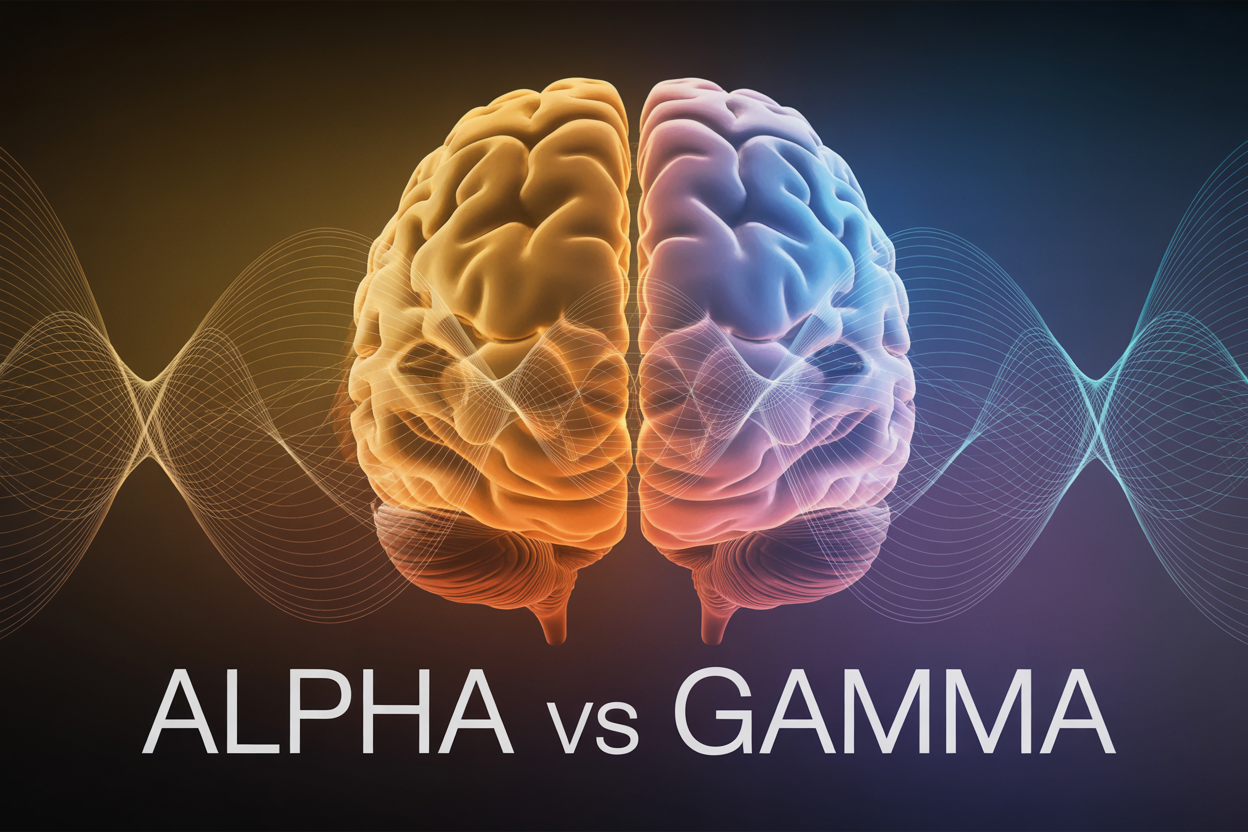Your brain runs on a powerful chemical messenger that drives everything from your morning motivation to your biggest career wins. Dopamine isn’t just about feeling good – it’s your brain’s reward system that pushes you toward goals, helps you stay focused, and keeps you coming back for more.
This guide is for anyone who wants to understand how their brain works and use that knowledge to get better results. Whether you’re an entrepreneur chasing your next breakthrough, a professional looking to stay motivated at work, or someone who just wants to feel more energized and focused every day, learning to work with your dopamine system can change everything.
We’ll start by breaking down how dopamine actually works in your brain and why it matters for motivation and success. You’ll discover simple, science-backed ways to boost dopamine naturally without relying on quick fixes that burn you out later. Then we’ll dive into practical dopamine lifestyle changes you can make today to protect your brain from the modern world’s biggest motivation killers – like social media overload and instant gratification traps.
By the end, you’ll have a clear roadmap for brain chemistry optimization that supports lasting motivation, better performance, and genuine well-being.
Understanding Dopamine’s Role in Your Brain

What dopamine actually does beyond pleasure
Dopamine gets a bad rap as simply the “pleasure chemical,” but this oversimplification misses its true genius. Think of dopamine as your brain’s personal project manager – it doesn’t just make you feel good, it orchestrates the complex dance between desire, action, and achievement.
The real magic happens in dopamine’s anticipatory function. Your brain releases dopamine not when you get the reward, but when you expect it. This prediction system drives you to seek, explore, and pursue goals with relentless energy. Without adequate dopamine levels, even simple tasks become overwhelming mountains to climb.
Dopamine also acts as your internal GPS for motivation neuroscience, constantly calculating whether something is worth your effort. Low dopamine doesn’t just mean less pleasure – it means your brain struggles to assign value to activities, making everything feel equally unimportant and draining your drive to take action.
How dopamine drives motivation and goal-seeking behavior
Your dopamine system operates like a sophisticated reward prediction algorithm. When you set a goal, dopamine creates a neurochemical bridge between your current state and desired outcome. This bridge generates the energy needed to close the gap through sustained action.
The pathway works through distinct phases:
- Wanting phase: Dopamine spikes when you identify a desirable outcome
- Seeking phase: Sustained dopamine release fuels persistent effort toward the goal
- Achievement phase: A brief dopamine surge confirms success and reinforces the behavior
Peak brain motivation occurs when your dopamine system correctly predicts that effort will lead to meaningful rewards. This explains why some people seem naturally driven while others struggle with consistency – their dopamine systems have learned different patterns about what’s worth pursuing.
The connection between dopamine levels and mental performance
Balanced dopamine levels create optimal conditions for cognitive excellence. Your prefrontal cortex, responsible for executive functions like planning and decision-making, relies heavily on dopamine to maintain focus and working memory.
When dopamine functions properly, you experience:
- Enhanced focus: Better ability to filter out distractions
- Improved working memory: Can hold and manipulate information more effectively
- Faster processing speed: Quicker mental calculations and pattern recognition
- Better cognitive flexibility: Easier switching between different tasks or concepts
Low dopamine creates a fog that makes mental tasks feel like swimming through honey. High-performing individuals often have naturally efficient dopamine systems that boost dopamine naturally through their daily routines and thought patterns.
Common myths about dopamine debunked
Myth 1: “Dopamine equals instant gratification addiction”
Reality: Healthy dopamine function actually promotes delayed gratification by making long-term goals feel rewarding.
Myth 2: “More dopamine is always better”
Reality: Your brain needs balanced dopamine levels. Too much can lead to impulsivity and poor decision-making.
Myth 3: “Dopamine only responds to external rewards”
Reality: You can increase dopamine levels through internal practices like visualization, goal-setting, and celebrating small wins.
Myth 4: “Dopamine depletion is permanent”
Reality: Your dopamine system shows remarkable plasticity and can recover with proper lifestyle changes and brain chemistry optimization strategies.
Understanding these realities helps you work with your dopamine system rather than against it, creating sustainable motivation that doesn’t rely on constant external stimulation.
Natural Ways to Boost Your Dopamine Production

Foods that naturally increase dopamine synthesis
Your brain needs specific building blocks to create dopamine, and the right foods can make all the difference. The amino acid tyrosine serves as dopamine’s primary precursor, so loading up on tyrosine-rich foods gives your brain the raw materials it craves.
Protein powerhouses like lean meats, fish, eggs, and dairy products contain high levels of tyrosine. Plant-based options work just as well – almonds, avocados, bananas, and sesame seeds pack a serious tyrosine punch. Velvet beans (mucuna pruriens) contain L-DOPA, which converts directly into dopamine, making them particularly effective for boost dopamine naturally.
Antioxidant-rich foods protect your existing dopamine neurons while supporting new production. Blueberries, dark chocolate, green tea, and turmeric fight oxidative stress that can damage your dopamine system. Iron-rich foods like spinach and lentils help transport oxygen to dopamine-producing brain regions.
Timing matters too. Eating protein earlier in the day supports dopamine production when you need motivation most. Skip the sugar crashes that deplete dopamine levels – instead, pair complex carbs with protein to maintain steady neurotransmitter synthesis throughout the day.
Exercise routines that optimize dopamine release
Movement triggers immediate dopamine release while building long-term resilience in your brain’s reward circuits. High-intensity interval training (HIIT) creates the most dramatic dopamine spikes, with levels jumping up to 200% above baseline during intense bursts.
Resistance training builds dopamine receptors over time, making your brain more sensitive to motivation signals. Compound movements like squats, deadlifts, and pull-ups activate multiple muscle groups and trigger stronger neurochemical responses than isolation exercises.
Cardio workouts between 65-85% of your maximum heart rate hit the sweet spot for sustained dopamine elevation. Running, cycling, or swimming at this intensity for 30-45 minutes creates a neurochemical cocktail that boosts mood and motivation for hours afterward.
Don’t overlook yoga and tai chi – these practices combine movement with mindfulness to regulate dopamine more effectively than either approach alone. The key is consistency rather than intensity. Even a 15-minute walk can increase dopamine levels, especially when you expose yourself to natural sunlight during the activity.
Sleep patterns that support healthy dopamine function
Quality sleep directly impacts your brain’s ability to produce and regulate dopamine. During deep sleep, your brain clears metabolic waste from dopamine neurons and replenishes neurotransmitter stores for the next day.
The magic happens during REM sleep cycles, typically occurring 90 minutes after you fall asleep. Your brain consolidates dopamine pathways and strengthens reward circuits during these crucial periods. Disrupting REM sleep through alcohol, caffeine, or irregular schedules sabotages dopamine production.
Aim for 7-9 hours of sleep with consistent bedtime and wake times. Your circadian rhythm synchronizes dopamine release with natural light cycles – exposure to morning sunlight within 30 minutes of waking optimizes this process. Blue light from screens disrupts melatonin production, which in turn affects dopamine regulation, so power down devices at least one hour before bed.
Sleep debt accumulates quickly and depletes dopamine reserves. Just one night of poor sleep can reduce dopamine receptor sensitivity by 20%. Creating a cool, dark sleep environment and maintaining steady sleep-wake cycles protects your dopamine system from these negative effects.
Meditation and mindfulness practices for dopamine regulation
Mindfulness practices rewire your brain’s reward system, teaching it to find satisfaction in present-moment awareness rather than external stimulation. Regular meditation increases baseline dopamine levels while reducing the need for constant stimulation to feel motivated.
Focused attention meditation strengthens prefrontal cortex control over dopamine pathways. Start with 10-minute sessions focusing on breath awareness. When your mind wanders, gently redirect attention back to breathing – this process literally builds neural circuits that regulate dopamine release.
Loving-kindness meditation triggers dopamine release through social bonding mechanisms in your brain. Spending 15 minutes sending good wishes to yourself and others activates reward pathways naturally and sustainably.
Body scan practices help you recognize subtle pleasure signals that spike dopamine levels. Many people miss these micro-rewards throughout the day, leading to dopamine depletion. Training yourself to notice small positive sensations – warmth from sunlight, the taste of water, comfortable clothing – provides steady dopamine boosts.
Mindful movement combines meditation benefits with exercise advantages. Walking meditation, mindful stretching, or conscious breathing during workouts amplifies dopamine production while building awareness of your body’s reward signals.
Harnessing Dopamine for Peak Motivation

Setting goals that trigger optimal dopamine responses
Your brain releases dopamine not just when you achieve something, but when you anticipate achieving it. This anticipation creates the perfect setup for sustained motivation. The key lies in crafting goals that maintain just the right level of challenge – difficult enough to be meaningful, but achievable enough to keep your dopamine system engaged.
Research shows that goals with approximately 85% probability of success trigger the strongest dopamine responses. This sweet spot creates what neuroscientists call “optimal uncertainty” – your brain knows success is likely but not guaranteed. When you set goals that are too easy, your dopamine system barely responds. Make them impossibly hard, and your brain shuts down the reward pathway entirely.
Breaking your larger objectives into smaller, specific targets keeps your motivation neuroscience working in your favor. Instead of “get in shape,” try “complete three 30-minute walks this week.” This specificity allows your brain to clearly visualize success and maintain steady dopamine production throughout your journey.
Time-bound goals amplify this effect. When you add deadlines, your brain’s reward system becomes more active as the target date approaches. The combination of clarity, achievability, and time pressure creates an ideal environment for peak motivation.
Creating reward systems that sustain long-term motivation
Smart reward systems work with your natural brain chemistry rather than against it. The most effective approach involves pairing intrinsic satisfaction with carefully timed external rewards. This strategy prevents the common motivation crash that occurs when people rely solely on external incentives.
Start by identifying what naturally energizes you about your work or goals. Maybe it’s the learning process, the creative challenge, or the impact on others. These intrinsic motivators provide steady dopamine baseline levels. Then, layer on strategic external rewards that celebrate progress without overshadowing the inherent satisfaction.
Intermittent reinforcement proves more powerful than consistent rewards. Your dopamine system responds more strongly to unpredictable positive outcomes than to guaranteed ones. Try rewarding yourself after completing 2-4 milestone achievements rather than after every single task. This unpredictability keeps your brain’s reward circuits highly engaged.
Variety prevents reward habituation, where your brain becomes desensitized to the same incentives. Rotate between different types of rewards – sometimes it’s a small treat, other times it’s a favorite activity, and occasionally it’s something more significant. This variety maintains the novelty that your dopamine system craves.
Breaking large tasks into dopamine-friendly milestones
Large projects can overwhelm your brain’s reward system, making it difficult to maintain motivation over extended periods. The solution involves restructuring these tasks into milestone-based progressions that provide regular dopamine hits throughout your journey.
Each milestone should represent meaningful progress toward your larger goal while being completable within a reasonable timeframe. A good rule of thumb is creating milestones that take 1-3 days to complete for daily motivation, with larger milestones spanning 1-2 weeks for bigger projects. This timing aligns with your brain’s natural reward cycles.
Visual progress tracking amplifies the motivational impact of milestones. Whether it’s checking items off a list, filling a progress bar, or moving tasks across a project board, these visual cues trigger additional dopamine release. Your brain interprets visual progress as concrete evidence of advancement, reinforcing the behavior that led to success.
Connect each milestone to the bigger picture. When you complete a smaller task, take a moment to acknowledge how it contributes to your ultimate objective. This mental connection helps maintain perspective and prevents the motivation dip that sometimes occurs when focusing too narrowly on individual steps.
Consider adding micro-rewards at key milestone points. These don’t need to be elaborate – even taking a few minutes to appreciate your progress or sharing an achievement with someone who matters to you can provide the dopamine boost needed to maintain momentum through challenging phases.
Dopamine-Driven Strategies for Professional Success

Designing Your Work Environment for Maximum Dopamine Impact
Your workspace affects your brain chemistry more than you might realize. Strategic environmental changes can naturally boost dopamine naturally and transform your productivity levels. Start with lighting – natural light triggers dopamine production, so position your desk near a window when possible. If natural light is limited, invest in a full-spectrum LED lamp that mimics sunlight.
Color psychology plays a crucial role in brain motivation. Blue enhances focus and cognitive performance, while green reduces eye strain and promotes creativity. Add plants to your workspace – research shows that greenery increases dopamine levels by up to 15% while reducing stress hormones.
Organization directly impacts your dopamine system. Clutter creates visual chaos that depletes mental energy and suppresses dopamine production. Create designated spaces for everything and maintain clear surfaces. Your brain rewards order with increased motivation and focus.
Temperature matters for optimal brain chemistry optimization. Keep your workspace between 68-72°F (20-22°C). Too warm environments reduce alertness, while cold spaces trigger stress responses that interfere with dopamine function.
Personal touches activate reward pathways in your brain. Display meaningful photos, achievements, or objects that represent your goals. These visual cues create positive associations and trigger small dopamine releases throughout your day.
Time Management Techniques That Work With Your Brain Chemistry
Understanding how your dopamine system health fluctuates throughout the day revolutionizes time management. Your brain produces the most dopamine in the morning, typically between 8-10 AM. Schedule your most challenging, important tasks during this natural peak.
The Pomodoro Technique aligns perfectly with dopamine production cycles. Work for 25 minutes, then take a 5-minute break. This rhythm matches your brain’s natural attention spans and provides regular dopamine hits from completing mini-sessions. Each completion triggers a small reward response that maintains motivation.
Time-blocking works because it leverages anticipation – a powerful dopamine trigger. When you assign specific time slots to tasks, your brain begins preparing and building excitement before you even start. Block similar tasks together to maintain focus and reduce the mental effort required to switch between different types of work.
Energy mapping beats traditional scheduling every time. Track your energy levels for one week, noting when you feel most alert, creative, or sluggish. Then align your tasks with these natural rhythms. High-dopamine periods should tackle complex problems, while low-energy times work better for routine tasks like email or filing.
Deadline proximity creates urgency that spikes dopamine levels. Instead of setting distant deadlines, break projects into weekly or daily milestones. This artificial urgency activates your reward system more frequently, maintaining steady motivation throughout long-term projects.
Building Habits That Create Sustainable Achievement Cycles
Habit stacking transforms new behaviors into automatic responses by linking them to established routines. Your existing habits already trigger dopamine responses. When you attach new behaviors to these established patterns, you borrow their neurochemical momentum. For example, if you always drink coffee at 9 AM, stack your most important task immediately after your first sip.
Small wins generate disproportionately large dopamine releases. Break large goals into micro-achievements that you can accomplish daily. Completing a 10-minute task produces the same neurochemical reward as finishing a major project – your brain doesn’t distinguish between big and small victories when calculating dopamine release.
Progress tracking amplifies achievement satisfaction. Visual progress indicators like charts, apps, or simple checklists provide concrete evidence of advancement. Your brain interprets this visible progress as reward-worthy, releasing dopamine even when you’re between major milestones.
Reward timing matters for habit formation. Immediate rewards strengthen neural pathways more effectively than delayed gratification. Build small celebrations into your routine – play a favorite song after completing a difficult task, enjoy a special snack, or take a short walk outside. These micro-rewards reinforce positive behaviors and increase dopamine levels.
Social accountability multiplies motivation through shared dopamine experiences. When others witness your achievements, you experience additional reward responses from social recognition. Share your goals with colleagues, friends, or online communities. The anticipation of sharing progress creates extra motivation, while actual sharing provides bonus dopamine hits.
Overcoming Procrastination Through Dopamine Optimization
Procrastination happens when your brain perceives a task as more painful than rewarding. Combat this by artificially increasing the reward value of avoided tasks. Connect boring or difficult work to larger personal goals that genuinely excite you. Your brain will begin associating the immediate task with the long-term reward, making it easier to start.
The “two-minute rule” exploits your brain’s momentum principle. Commit to working on any avoided task for just two minutes. This tiny commitment feels non-threatening, making it easy to begin. Once you start, momentum often carries you beyond the initial two minutes. Your brain rewards the act of starting with dopamine, making continuation more likely.
Environmental friction reduction eliminates barriers that your brain interprets as obstacles. Set up your workspace the night before. Have all necessary materials ready. Remove any steps between you and starting work. Each eliminated obstacle reduces the mental energy required to begin, making procrastination less likely.
Temptation bundling pairs unpleasant tasks with enjoyable activities. Listen to your favorite podcast only while doing administrative work. Drink your special coffee only during focused work sessions. This technique literally rewires your brain to associate previously avoided tasks with pleasure, increasing dopamine and motivation neuroscience in action.
Fear of imperfection often drives procrastination. Counter this by explicitly planning for “rough drafts” or “version one” of everything. Give yourself permission to produce imperfect work initially. This reduces performance anxiety and makes starting feel safer. Your brain stops perceiving the task as threatening, removing a major barrier to action.
Protecting Your Dopamine System from Modern Threats

Identifying Activities That Deplete Your Dopamine Reserves
Your brain’s dopamine system works like a bank account – you can make deposits and withdrawals, but overdrawing leads to serious consequences. Modern life bombards us with activities that create massive dopamine spikes followed by crushing lows, leaving your motivation system depleted and struggling to function normally.
High-stimulation activities are the biggest culprits. Video games designed with variable reward schedules, binge-watching streaming services, and endless social media scrolling all flood your brain with artificial dopamine hits. These activities hijack your natural reward pathways, making everyday accomplishments feel underwhelming by comparison.
Processed foods loaded with sugar and artificial additives create similar problems. Your brain releases dopamine when you eat these foods, but the crash that follows leaves you craving more stimulation. This cycle gradually diminishes your ability to find satisfaction in healthier, more sustainable rewards.
Multitasking and constant connectivity also drain your dopamine reserves. When you switch between tasks rapidly or stay plugged into notifications all day, your brain never gets the chance to reset and recharge its motivation systems.
Managing Social Media and Technology for Better Brain Health
Social media platforms engineer their features specifically to trigger dopamine release and keep you engaged. The red notification badges, infinite scroll features, and unpredictable content delivery all exploit your brain’s reward system in ways that can seriously damage your long-term motivation and focus.
Start by implementing digital boundaries. Turn off non-essential notifications and designate specific times for checking social platforms. Instead of mindlessly scrolling, approach social media with intention – decide what you want to accomplish before opening an app.
Create phone-free zones in your home, especially in bedrooms and dining areas. The mere presence of your smartphone can reduce cognitive performance and increase stress hormones that interfere with healthy dopamine function.
Consider using app timers and website blockers during work hours. These tools help break the automatic habit of reaching for digital stimulation when you encounter the slightest difficulty or boredom. Your brain needs to relearn how to push through challenges without seeking immediate gratification.
Replace high-stimulation digital activities with moderate-stimulation alternatives. Instead of doom-scrolling news feeds, try reading physical books. Swap endless YouTube videos for podcasts you can listen to while walking. These changes help recalibrate your brain’s reward threshold to healthier levels.
Avoiding Dopamine Tolerance and Addiction Patterns
Dopamine tolerance develops when your brain becomes accustomed to high levels of stimulation, requiring increasingly intense experiences to feel the same satisfaction. This pattern mirrors addiction pathways and can leave you feeling chronically unmotivated and depressed.
Recognition is the first step. Notice when activities that once brought joy start feeling flat or when you need more extreme versions to feel satisfied. Whether it’s needing louder music, spicier food, or more intense entertainment, these signs indicate your dopamine system is becoming desensitized.
Practice dopamine fasting – deliberately avoiding high-stimulation activities for set periods. This doesn’t mean sitting in a dark room doing nothing, but rather engaging in low-stimulation activities like walking, reading, or having conversations without digital distractions. Even 24-48 hours can help reset your sensitivity.
Gradually reduce rather than eliminate problematic activities. Cold turkey approaches often fail because they create additional stress. Instead, slowly decrease the time spent on high-dopamine activities while increasing engagement in healthier alternatives.
Build awareness around your trigger patterns. Many people reach for dopamine hits when they’re stressed, bored, or facing difficult tasks. Identifying these patterns allows you to prepare alternative responses that support rather than deplete your motivation system.
Creating Boundaries That Preserve Your Motivation System
Protecting your dopamine system requires deliberate boundaries between high and low stimulation periods. Your brain needs both excitement and rest to maintain optimal function, but modern life often provides constant stimulation without recovery time.
Establish morning routines that don’t immediately flood your system with dopamine. Avoid checking your phone, news, or social media for the first hour after waking. Instead, engage in activities like stretching, journaling, or preparing a healthy breakfast. This gives your brain time to naturally produce motivation-supporting neurochemicals.
Create work environments that minimize dopamine-depleting distractions. Use separate devices or browser profiles for work and entertainment. Keep your workspace clean and organized to reduce the cognitive load that can drive you toward seeking easy dopamine hits.
Set specific times for high-stimulation activities rather than allowing them to interrupt your day randomly. If you enjoy gaming or binge-watching shows, schedule these activities after completing important tasks. This approach maintains the enjoyment while preventing these activities from undermining your productivity and motivation.
Design your physical environment to support healthy dopamine function. Remove visual clutter, ensure adequate natural light, and create spaces dedicated to focused work or relaxation. Your environment significantly influences your brain chemistry, so make it work for rather than against your long-term well-being.
Practice saying no to activities that provide immediate gratification but leave you feeling depleted afterward. This might mean declining certain social events, avoiding impulse purchases, or choosing not to engage with content that triggers comparison or negative emotions. Protecting your dopamine system often requires prioritizing long-term brain health over short-term pleasure.
Lifestyle Changes for Long-term Dopamine Health

Daily Routines That Support Consistent Dopamine Function
Creating a dopamine-friendly daily routine starts with understanding your brain’s natural rhythms. Your dopamine levels naturally peak in the morning hours, making this the perfect time for challenging tasks that require motivation and focus. Structure your day around this biological advantage by tackling your most important work before noon.
Start each morning with a consistent wake-up time, even on weekends. This simple habit helps regulate your circadian rhythm, which directly impacts dopamine production. Follow this with 10-15 minutes of natural sunlight exposure – this triggers dopamine release and sets your internal clock for optimal brain chemistry throughout the day.
Physical movement acts as a powerful dopamine booster. Build 20-30 minutes of exercise into your routine, whether it’s a morning walk, afternoon workout, or evening yoga session. The key is consistency rather than intensity. Regular movement increases dopamine levels for hours after your workout ends.
Create micro-rewards throughout your day by breaking larger tasks into smaller, achievable chunks. Each completed mini-task triggers a small dopamine release, keeping your motivation steady. Track these accomplishments in a simple journal or app to create visual progress that reinforces your reward system.
End your day with a digital sunset – turning off screens 1-2 hours before bed. Blue light exposure disrupts dopamine regulation and sleep quality, both crucial for maintaining healthy brain chemistry. Replace screen time with reading, light stretching, or planning tomorrow’s priorities.
Stress Management Techniques That Protect Your Reward System
Chronic stress devastates your dopamine system by flooding your brain with cortisol, which directly interferes with dopamine production and receptor sensitivity. Managing stress isn’t just about feeling better – it’s about protecting your brain’s motivation and reward circuits.
Deep breathing exercises offer immediate stress relief while supporting dopamine function. Practice the 4-7-8 technique: inhale for 4 counts, hold for 7, exhale for 8. This activates your parasympathetic nervous system and creates space for dopamine to work effectively. Use this technique whenever you feel overwhelmed or before important tasks.
Meditation doesn’t require hours of sitting in silence. Even 5-10 minutes of mindfulness practice can reduce cortisol levels and increase dopamine sensitivity. Start with guided meditations or simple breath awareness. The goal is creating mental space between stressful situations and your reactions to them.
Time blocking protects your dopamine system by preventing the constant context-switching that drains mental energy. Dedicate specific time slots to different activities – work projects, email, personal tasks – rather than jumping between them randomly. This reduces decision fatigue and preserves your brain’s reward processing capacity.
Learn to say no to non-essential commitments. Overcommitment creates chronic low-level stress that gradually erodes dopamine function. Before accepting new responsibilities, ask yourself if they align with your core goals and values. Protecting your time protects your brain chemistry.
Building Meaningful Relationships That Enhance Dopamine Production
Human connection is one of the most powerful natural dopamine boosters available. When you share positive experiences with others, your brain releases dopamine not just from the activity itself, but from the social bonding that occurs. This creates a compound effect that significantly amplifies your brain’s reward response.
Quality trumps quantity in relationship building. Focus on deepening a few meaningful connections rather than maintaining superficial relationships with many people. Schedule regular one-on-one time with people who energize you. These interactions could be weekly coffee dates, monthly dinners, or even 15-minute phone calls that maintain genuine connection.
Practice active listening as a dopamine-boosting skill. When you’re fully present with someone, paying attention to their words and emotions, your brain releases dopamine from the meaningful interaction. This creates positive feedback loops where both people feel more connected and motivated to maintain the relationship.
Engage in shared activities that naturally produce dopamine. This might include exercising together, learning new skills, working on creative projects, or volunteering for causes you both care about. These experiences create positive associations between the person and the dopamine release, strengthening your bond.
Express gratitude regularly within your relationships. Acknowledging what others contribute to your life activates your brain’s reward circuits while strengthening social bonds. Send unexpected thank-you messages, acknowledge specific things people do for you, or simply tell them how much they mean to you. This practice benefits both your dopamine levels and relationship quality.
Set healthy boundaries that protect your energy for meaningful connections. Toxic relationships drain dopamine by creating chronic stress and negative emotions. Distance yourself from people who consistently leave you feeling depleted, criticized, or anxious. Your brain chemistry is too valuable to sacrifice for relationships that don’t serve your well-being.

Dopamine truly is your brain’s secret weapon for living a more motivated and fulfilling life. When you understand how this powerful neurotransmitter works and take steps to support it naturally, you’re setting yourself up for better focus, stronger drive, and genuine happiness. The simple changes we’ve covered—from getting quality sleep and exercise to managing your screen time and celebrating small wins—can make a real difference in how you feel and perform every day.
Your dopamine system is constantly adapting to your choices, so treat it with care. Start small by picking one or two strategies that resonate with you, whether that’s adding a morning walk or setting up better reward systems at work. Remember, building healthy dopamine habits isn’t about perfection—it’s about creating a sustainable lifestyle that keeps your brain’s motivation engine running smoothly for years to come.








